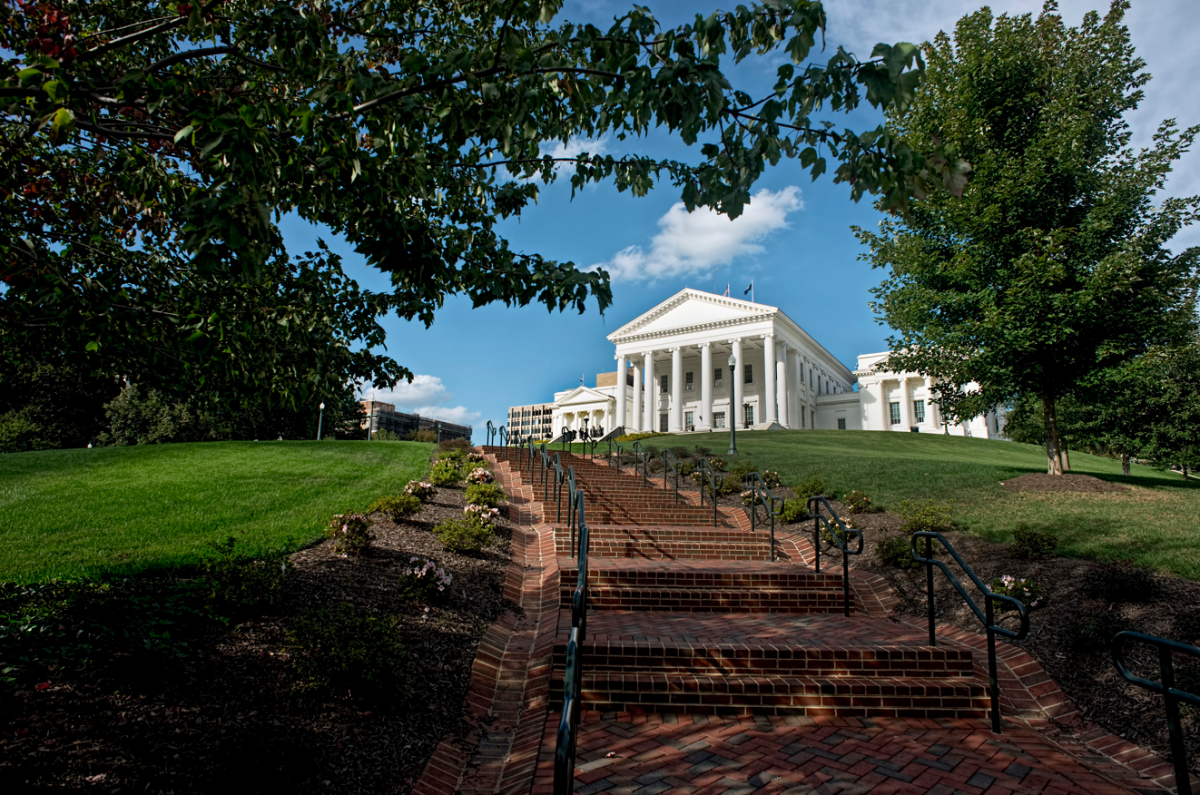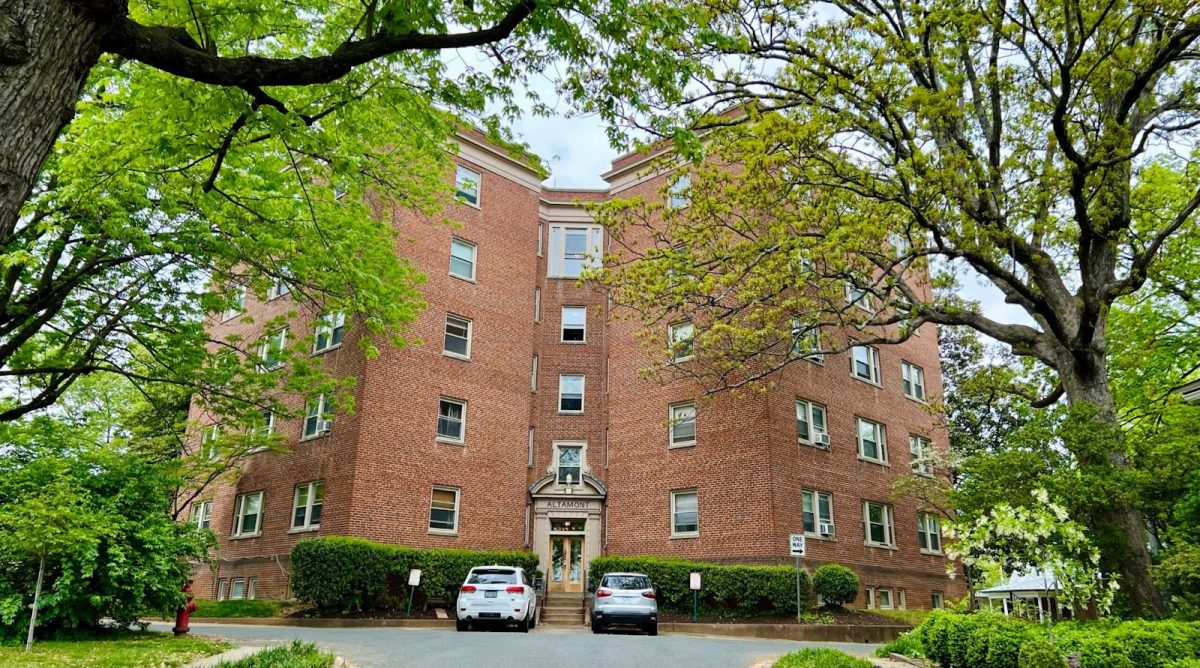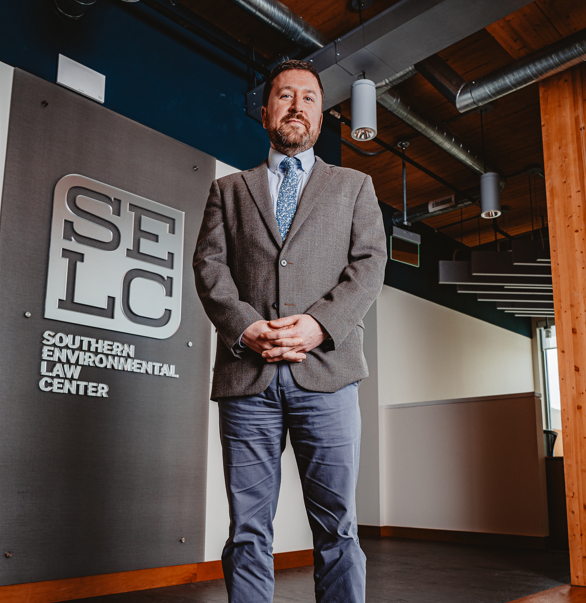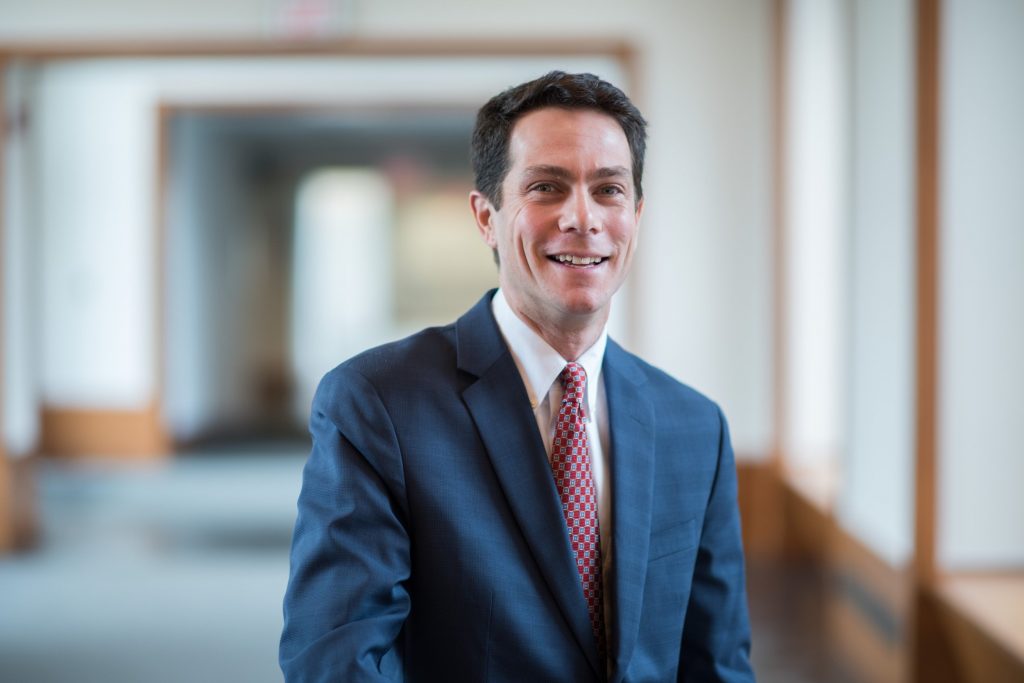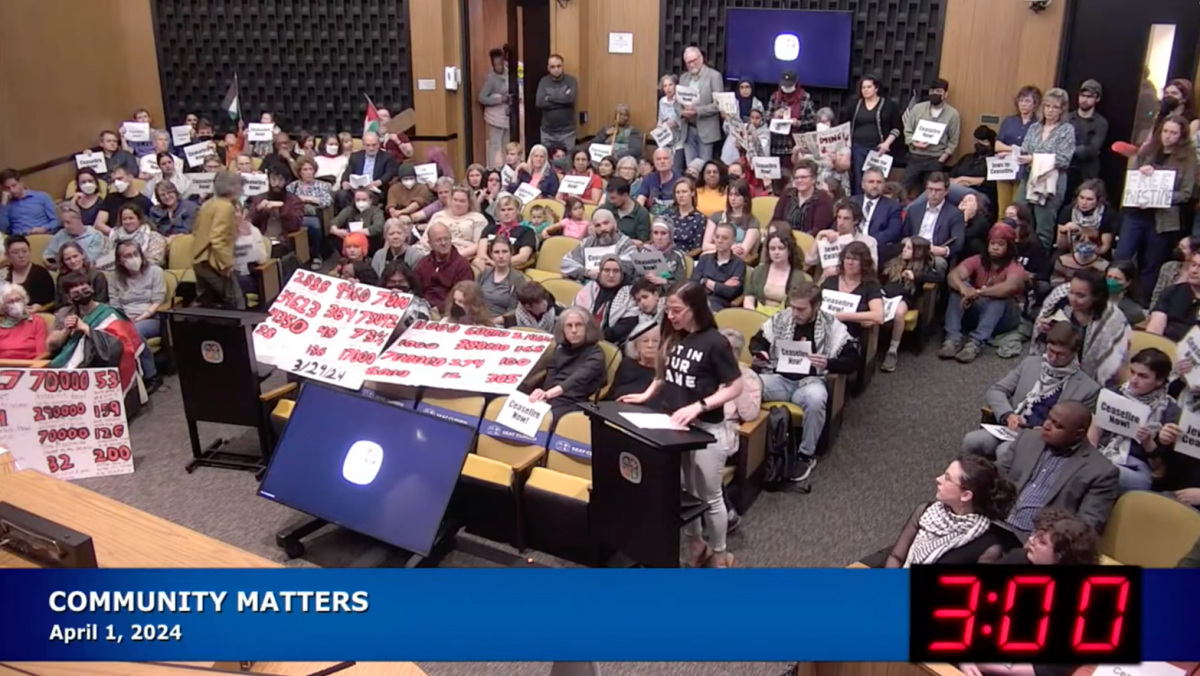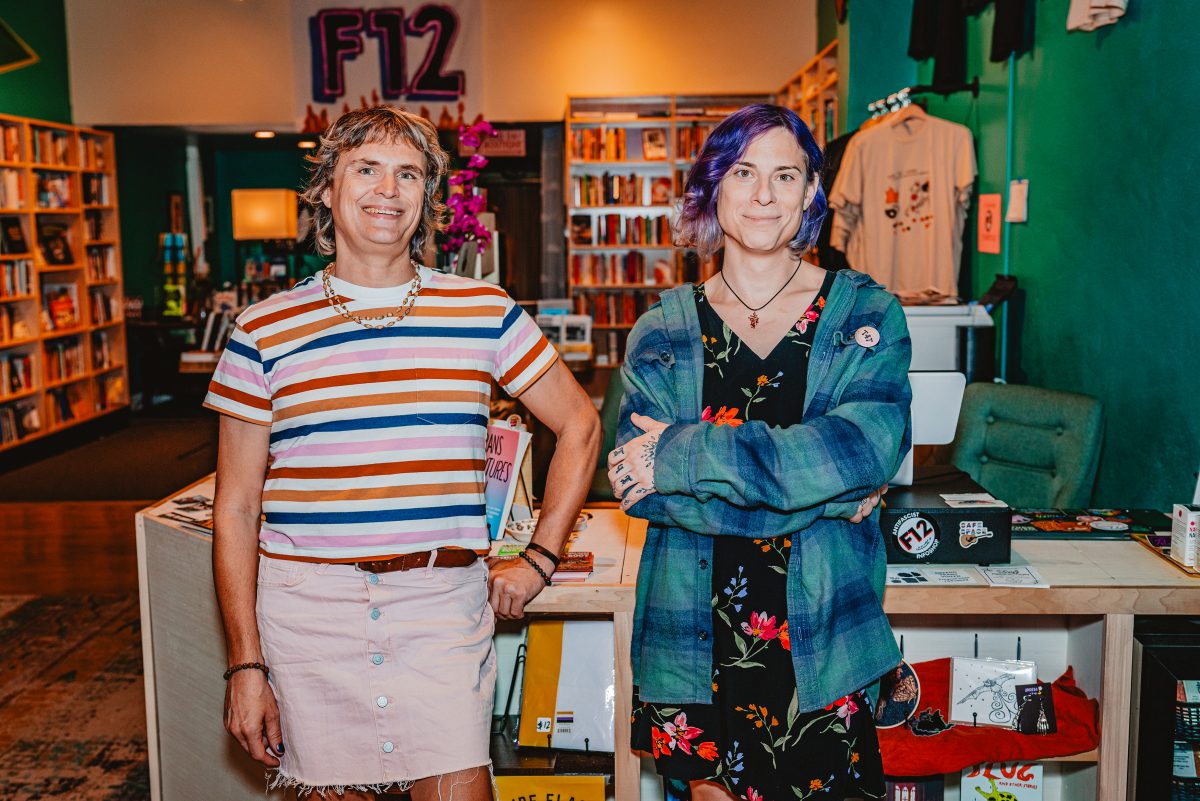On a recent cool morning in Gordonsville, a cadre of a half-dozen cops in street clothes assembled next to the local fire department. Their commanding officer for the day, Lt. Patrick Sheridan of the Louisa County Sheriff’s Office, was ready to get started.
“8:25!” Sheridan shouted. It was the time that the trail was laid; crucial information for anyone using a man-trailing animal, and served as the green flag in this particular race.
The first one to take him up on the challenge was Charlottesville Police Department’s Darius Nash and his 18-month-old bloodhound, Blue. Nash walked to his cruiser, cracked the back door, and out shot an energetic hound who was clearly in need of two things: affection and a bathroom, in that order.
After some slobbery kisses and a quick stop in a grassy patch next to the fire department, it was time for Blue’s favorite game: hide and seek.
Gordonsville was the site of Group A’s first day of training in the 12th annual Louisa County Bloodhound Training Seminar. The group was led by Sheridan, who has owned, trained, and employed bloodhounds in his work for over 20 years. In that time, he has traveled across the country and to Europe, both as teacher and student, and has been the driving force behind Louisa’s annual Bloodhound Training Seminar, where dozens of law enforcement organizations from throughout the state and the country send their handlers to learn from some of the best canine officers and search-and-rescue personnel in the country. The event has become so popular that there’s a substantial waiting list to attend.
“I got Annie, my first dog, in 1997,” Sheridan says. “Then there was Maggie, then Rizzo, and now Ally, so I’ve had four dogs in my career.”
He was brief in mentioning the name of K9 Maggie. Her’s is a story he doesn’t tell very often, but it’s one that, for many people in this area, he doesn’t have to: In December of 2011, Maggie was attacked by another dog while on a call for service. Initially, the attack appeared survivable, but a bacteria from the other dog’s saliva got into her bloodstream and Maggie passed away as a result. Her image can be found everywhere in Sheridan’s life, from his social media pages to the walls of his home.

Sheridan’s successes have been as well-known as his tragedies. He has been in the news often, both in this area and nationwide, and has set important case law in Virginia. Along with former Louisa County Sheriff’s Office handler Stuart “Buck” Garner, and the help of their bloodhounds, Sheridan was instrumental in catching and convicting Adam Pelletier in the rape and murder of Aimee Marie Meadows. Their work, and subsequent testimony, set the precedent that allowed bloodhound identification to be used as expert testimony in Virginia courts. Garner was again in the news in 2016, when he testified in the case of Hannah Graham—his dog was able to track the murdered University of Virginia student’s scent to the car and apartment of Jesse Matthew, more than 24 hours after she’d gone missing. Matthew was eventually convicted of her murder.
In addition to Sheridan’s duties as bloodhound handler for the department, he also manages half of the patrol division, all of the school resource officers, and event security for school events throughout the county. He’s run hundreds of calls in central Virginia as a K9 handler, and found “dozens” of people, both criminals on the lam and civilians, lost or injured in the endless woods of the Piedmont.
Officer Nash and Blue tracked the “runner” about 300 yards west on Baker Street toward Main Street in Gordonsville. Blue was a frenetic bundle of affection and slobber three minutes ago, but after Nash put on his harness and gave the order, Blue became a different dog. He was all business now.
Blue got sidetracked, and headed to a local resident’s chicken coup. “Nope,” Nash said. Theirs was a balance of communication and natural ability. Blue has the superpower, a million more olfactory receptors than a human, but he needs information and feedback in order to use it.
“When you see that head go down and that tail start wagging,” Sheridan says, “that’s when you should be ready.”
Next to Sheridan was Deputy Christian Amos of the Orange County Sheriff’s Office, who will get his first dog in the coming months. He was along the trail with Nash, Blue, and the rest of the group as an observer.
“That means you’re close?” Amos asks. Sheridan nods.
Blue’s head was down now, and his tail was wagging. He rounded the corner, and looked at the porch of a local dentist’s office. He scanned the area with his nose, and darted into the apparently empty bushes. Buried inside is Terry Davis, president of the Virginia Bloodhound Search and Rescue Association. Also known as “the runner.” Immediately, Blue reverted back into the chaotic, lovable slobber machine he’d been roughly 15 minutes before. His reward: Vienna sausages and more slobbery kisses.
Humans have been using hounds to hunt since the Middle Ages. It’s believed they’re the modern descendants of the extinct Norman Hound breed. In France, they’re called “le chien de Saint-Hubert” or St. Hubert’s Hounds. In the U.K., they’re known as “sleuth hounds,” and have been employed, along with beagles and other types of hounds, in their traditional fox hunts. Tradition also holds that they were used to track the famous Scottish rebels William Wallace and Robert the Bruce during their flight from English capture in the late-13th and early-14th centuries.
Their ability to track a scent hours, even days, after the trail has been set, is well recorded. A famous story in bloodhound lore is that of the unnamed record-breaking dog in Oregon in 1954. In a newspaper article, it mentions a “local bloodhound” finding the trail of a missing family over 330 hours after they’d gone missing. Unfortunately, the family had died of exposure in the Oregon wilderness.
“They call them bloodhounds for a reason,” says Franklin County Sheriff’s Office Deputy John Lavinder, another handler and trainer from Virginia Bloodhound Search and Rescue Association. “They can use your blood, sweat, urine, or any other bodily fluid as a scent article to track you.”
Lavinder also clears up the famous Hollywood myth about running in bodies of water to get bloodhounds off your trail.
“Actually, that water takes those cells off your skin and spreads them out over a larger area, meaning the dog will be able to tell where you went and hold on to that scent easier,” he says. “You’ll just go to jail wet.”
As Nash returns from his successful hunt, the other members of Group A are standing in a circle, making small talk. The other bloodhounds bark their congratulatory remarks at Blue, as he darts toward his second home: the custom, back-seat doghouse of Nash’s cruiser, complete with its own dog bowls built into the floorboards.
The next team to take on the hunt is Officer Emma Orr, from Rock Hill, South Carolina, and her 7-year-old black and tan bloodhound, Lucy. Sheridan has known Lucy since she was a puppy, and she runs right up to him the minute she gets out of her cruiser.
Despite being from out-of-state, the handlers and trainers at the training seminar seem like they’ve known each other all their lives. Most of them have trained together before. They’ve got nicknames for one another, know each other’s dog’s names, and tease each other incessantly. Orr’s nickname is “Teeter,” which the group refuses to explain. No more evident is this camaraderie than in the way Lucy reacts to Sheridan when she sees him, jumping up for a full, standing hug, and a big slobbery kiss.
“Oh, I love this dog,” Sheridan says, grinning, “I could put people in jail with this dog.”
“I have,” Orr says, sharing his smile.
As the harness comes out, and the scent article is chosen, Sheridan again shouts the time the trail was laid, “8:25!”
Orr looks down at her partner, and gives Lucy the words she’s been waiting for: “Get to work.”

